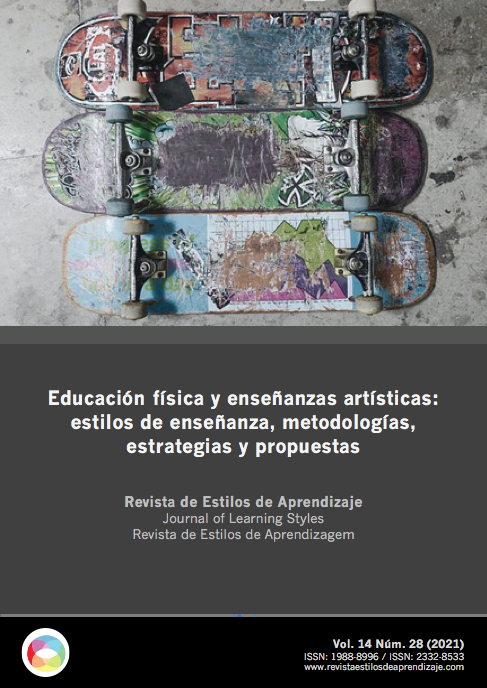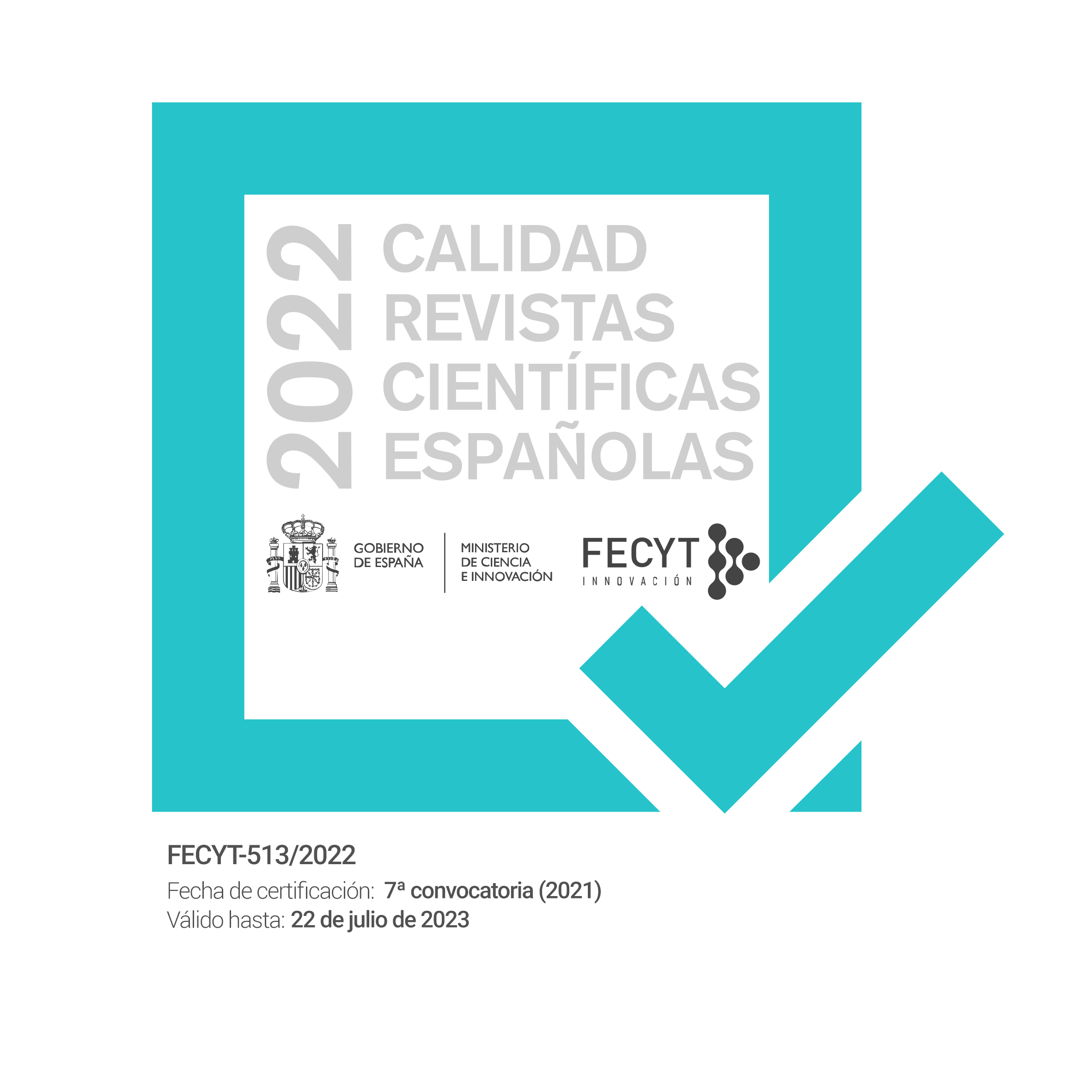Estilos de aprendizagem e experiências dos alunos do ensino secundário sénior no ensino remoto de emergência
DOI:
https://doi.org/10.55777/rea.v14i28.3372Palavras-chave:
learning styles; social presence; emergency remote teachingResumo
Actualmente, as instituições mexicanas de baccalauréat estão a promover o ensino remoto de emergência. A mudança é apenas temporária, mas recomenda-se implementar tecnologia, considerar as necessidades e estilos de aprendizagem dos estudantes e promover a sua autonomia nas experiências de aprendizagem em linha. Além disso, incluir a presença social, cognitiva e de professores. Este estudo qualitativo visava analisar as experiências de aprendizagem em linha dos estudantes do ensino secundário em relação aos seus estilos de aprendizagem. A amostra é voluntária e é composta por 37 participantes. Os resultados mostram uma predominância de aprendizes teóricos, seguidos por aprendizes pragmáticos e finalmente aprendizes activos. Nas experiências de aprendizagem favoráveis, os professores utilizam estratégias e materiais adequados para promover a aprendizagem. As experiências negativas deveram-se à falta de compreensão e interacção dos estudantes, bem como à falta de explicação, reforço e feedback dos professores, reflectindo a falta de presença cognitiva e de professores e a omissão de elementos nas experiências de aprendizagem em linha que atendessem às particularidades dos estudantes no que diz respeito aos seus estilos de aprendizagem.
Downloads
Referências
Abdullah, M., Daffa, W. H., Bashmail, R. M., Alzahrani, M., & Sadik, M. (2015). The impact of learning styles on Learner's performance in E-learning environment. International Journal of Advanced Computer Science and Applications, 6(9), 24- 31. https://bit.ly/3a9qWrU
Agrawal, A. K., & Mittal, G. K. (2018). The role of ICT in higher education for the 21st century: ICT as a change agent for education. Multidisciplinary Higher Education, Research, Dynamics & Concepts: Opportunities & Challenges For Sustainable Development, 1(1), 76-83. https://bit.ly/329nTvv
Alonso, C. M., Gallego, D, J., & Honey, P. (1997). Los estilos de aprendizaje: Procedimientos de diagnóstico y mejora [Learning Styles: Diagnostic and Improvement Procedures] (7ª. Ed.). Bilbao, España: Mensajero.
Álvarez- Gayou, J.L. (2003). Cómo hacer investigación cualitativa. Fundamentos y metodología. México: Páidos.
Arrosagaray, M., González-Peiteado, M., Pino-Juste, M., & Rodríguez-López, B. (2019). A comparative study of Spanish adult students’ attitudes to ICT in classroom, blended and distance language learning modes. Computers & Education, 134, 31-40. https://doi.org/10.1016/j.compedu.2019.01.016
Barbour, M. K., LaBonte, R., Hodges, C., Moore, S., Lockee, B., Trust, T., & Kelly, K. (2020). Understanding pandemic pedagogy: Differences between emergency remote, remote, and online teaching. State of the Nation: K-12 e-Learning in Canada. Retrieved from http://hdl.handle.net/10919/101905
Barraza, A. (2006). La encuesta: ¿Método o técnica? Investigación educativa duranguense [The survey: method or technique? Duranguense educational research]. 5, 1-17. https://dialnet.unirioja.es/descarga/articulo/2880937.pdf
Candarli, D., & Yuksel, H. G. (2012). Students’ perceptions of video-conferencing in the classrooms in higher education. Procedia-Social and Behavioral Sciences, 47, 357- 361. https://doi.org/10.1016/j.sbspro.2012.06.663
Çapuk, S. (2015). ICT Integration models into middle and high school curriculum in the USA. Procedia-Social and Behavioral Sciences, 191, 1218-1224. https://doi.org/10.1016/j.sbspro.2015.04.409
Çelik, B., & Gündoğdu, K. (2016). The effect of using humor and concept cartoons in high school ICT lesson on students’ achievement, retention, attitude and anxiety. Computers & Education, 103, 144-157. https://doi.org/10.1016/j.compedu.2016.10.008
Chandra, V., & Briskey, J. (2012). ICT driven pedagogies and its impact on learning outcomes in high school mathematics. International Journal of Pedagogies and Learning, 7(1), 73-83.
Doulik, P., Skoda, J., & Simonova, I. (2017). Learning styles in the e-learning environment: the approaches and research on longitudinal changes. International Journal of Innovation and Learning, 21(4), 417-434. https://doi.org/10.1504/IJIL.2017.084359
Garrison, D. R., Anderson, T., & Archer, W. (2001). Critical thinking and computer conferencing: A model and tool to assess cognitive presence. http://hdl.handle.net/2149/740
Garrison, D. R., & Vaughan, N. D. (2008). Blended learning in higher education: Framework, principles, and guidelines. United States of America: John Wiley & Sons.
Hattie, J., & Timperley, H. (2007). The power of feedback. Review of educational research, 77(1), 81-112. DOI: 10.3102/003465430298487
Hayes, D. N. (2007). ICT and learning: Lessons from Australian classrooms. Computers & Education, 49(2), 385-395. https://doi.org/10.1016/j.compedu.2005.09.003
Herrera, L. (2012). Self-Access Language Learning: Students’ Perceptions of and Experiences Within this New Mode of Learning. Profile: Issues in Teachers’ Professional Development, 14(1), 113-127. https://revistas.unal.edu.co/index.php/profile/article/view/29061
INEGI. (2019). Estadísticas a propósito del día mundial del internet [Statistics on world internet day]. INEGI. https://bit.ly/3g47osX
ISBE. (2020). Recomendaciones de aprendizaje remoto durante la emergencia de Covid-19 [Remote learning recommendations during the Covid-19 emergency]. ISBE. https://bit.ly/3mF550L
Kefee, J. W., & Ferrell, B. G. (1990). Developing a defensible learning style paradygm. Educational leadership, 48(2), 57-61. https://eric.ed.gov/?id=EJ416436
Martínez, M. (2006). La investigación cualitativa: síntesis conceptual. Revista IIPSI, 9(1), 123-146. http://revistasinvestigacion.unmsm.edu.pe/index.php/psico/article/viewFile/4033/3213
Moto, S., Ratanaolarn, T., Tuntiwongwanich, S., & Pimdee, P. (2018). A Thai junior high school students’ 21st century information literacy, media literacy, and ICT literacy skills factor analysis. International Journal of Emerging Technologies in Learning (IJET), 13(09), 87-106. https://onlinejour.journals.publicknowledgeproject.org/index.php/i-jet/article/view/8355
Muñoz, J., & González, A. (2010). Teaching Reading Comprehension in English in a Distance Web-Based Course: New Roles for Teachers. Profile, 12(2). 69-85. http://www.scielo.org.co/scielo.php?script=sci_arttext&pid=S1657-07902010000200005
Nair, R. J. (2016). Self-image and self-esteem for a positive outlook. Training Manual on Theeranaipunya - Equipping Fisherwomen Youth for Future. ICAR-Central Marine Fisheries Research Institute, Kochi, 75-78. http://eprints.cmfri.org.in/10815/
Nikolopoulou, K., & Gialamas, V. (2016). Barriers to ICT use in high schools: Greek teachers’ perceptions. Journal of Computers in Education, 3(1), 59-75. https://doi.org/10.1007/s40692-015-0052-z
O’Connor, H., & Gibson, N. (2003). A step-by-step guide to qualitative data analysis. Pimatisiwin: A Journal of Indigenous and Aboriginal Community Health, 1(1), 63- 90. https://bit.ly/3mJ02fJ
Özyurt, Ö., & Özyurt, H. (2015). Learning style based individualized adaptive e-learning environments: Content analysis of the articles published from 2005 to 2014. Computers in Human Behavior, 52, 349-358. https://doi.org/10.1016/j.chb.2015.06.020
Quintanal, F. (2017). Estudio de caso con estudiantes de física y química de bachillerato: estilos de aprendizaje, ciencia y publicidad. Revista De Estilos De Aprendizaje, 10(20). Recuperado a partir de http://revistaestilosdeaprendizaje.com/article/view/1059
Ramírez Gallegos, E.N., Lozano Rodríguez, A. y Zárate Ortiz, J.F. (2017). Los estilos de aprendizaje y el rendimiento académico en estudiantes de cuarto semestre de bachillerato [Learning styles and academic performance in students in the fourth semester of high school]. Revista De Estilos De Aprendizaje, 10(20), 182-219. http://revistaestilosdeaprendizaje.com/article/view/1062/1779
Rourke, L., Anderson, T., Garrison, D. R., & Archer, W. (2001). Assessing social presence in asynchronous text-based computer conferencing. The Journal of Distance Education/Revue de l'Éducation à Distance, 14(2), 50-71. https://www.learntechlib.org/p/92000/
Salehi, H., & Salehi, Z. (2012). Integration of ICT in language teaching: Challenges and barriers. In 3rd International Conference on e-Education, e-Business, e-Management and e-Learning IPEDR (Vol. 27). https://www.academia.edu/28261513/Integration_of_ICT_in_language_teaching_Challenges_and_barriers
Seçer, Ş. Y., Şahin, M., & Alcı, B. (2015). Investigating the effect of audio-visual materials as warm-up activity in Aviation English courses on students’ motivation and participation at high school level. Procedia-Social and Behavioral Sciences, 199,120-128. https://doi.org/10.1016/j.sbspro.2015.07.495
SEP (2019). Principales cifras del sistema educativo nacional. México[Main figures of the national education system]: SEP. https://bit.ly/32gay4t
Tordecilla González, J. P., Nuñez, B. A., & Dávila, C. M. G. (2017). Estilos de aprendizaje en estudiantes de educación media y su relación con el desempeño en las pruebas Saber 11. Revista De Estilos De Aprendizaje, 10(20). Recuperado a partir de http://revistaestilosdeaprendizaje.com/article/view/1055
Wagner, E., Enders, J., Pirie, M., & Thomas, D. (2016). Supporting academic integrity in a fully-online degree completion program through the use of synchronous video conferences. Journal of Information Systems Education, 27(3), 159. http://jise.org/volume27/n3/JISEv27n3p159.html
Yeop, M. A., Wong, K. T., & Goh, P. S. C. (2016). Blended learning: pedagogy, learning styles, and assessment activities in the classroom. International Journal of Advanced and Applied Sciences, 33(11), 36-39.
Zambrano Acosta, J., Arango Quiroz, L., & Lezcano Rueda, M. (2018). Estilos de aprendizaje, estrategias de aprendizaje y su relación con el uso de las TIC en estudiantes de educación secundaria [Learning styles, learning strategies and their relationship with the use of ICT in secondary school students]. Revista De Estilos De Aprendizaje, 11(21). http://revistaestilosdeaprendizaje.com/article/view/1087
Downloads
Publicado
Como Citar
Edição
Secção
Licença
Ao submeter o original, o(s) autor(es) declara(m) ter conhecimento e aceitar, na íntegra, a política de privacidade, bem como os direitos de autor da Revista Estilos de Aprendizagem.
A Revista Estilos de Aprendizaje oferece acesso livre e gratuito ao seu conteúdo, a fim de levar a investigação científica aos seus leitores e à sociedade em geral. Todo o conteúdo digital é de acesso livre e gratuito e é publicado sob uma licença Creative Commons:

A cessão de direitos é feita sob a licença Creative Commons Reconocimiento-NoComercial-SinObraDerivada 4.0 Internacional (CC-BY-NC-ND 4.0)
The Learning Styles Magazine é uma revista de acesso aberto. A publicação de artigos ou resenhas na Revista não lhe dá direito a qualquer remuneração. Da mesma forma, tanto para os autores como para os leitores, a revista é gratuita Creative Commons Reconocimiento-NoComercial-SinObraDerivada 4.0 Internacional (CC-BY-NC-ND 4.0).
Com Esta licença permite a reprodução e divulgação do conteúdo da revista para transmissão educativa, social e de conhecimento, sem fins lucrativos e desde que não sejam modificados, citando a origem e a autoria. A licença concedida à Revista Estilos de Aprendizaje permite a cópia e distribuição do conteúdo da revista, desde que a autoria da obra seja reconhecida, especificando correctamente o autor e a entidade editora. A obra não pode ser utilizada para fins comerciais, nem pode ser alterada, transformada ou gerada a partir desta obra. A publicação de artigos ou resenhas na Revista não dá direito a qualquer remuneração.
A Revista Estilos de Aprendizagem convida o autor/autores a aumentar a visibilidade e o âmbito dos seus artigos publicados através da sua redifusão em:
- Espaços Web e redes pessoais, bem como em reuniões e fóruns científicos
- Arquivos institucionais abertos em Universidades, repositórios educacionais e Centros de Investigação
- Redes académicas e científicas (Researchgate, Academia.edu, Plubons, etc.)
Todos estes espaços e publicações devem incluir todos os dados bibliográficos da publicação.

























